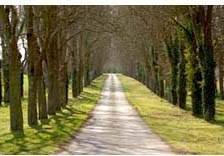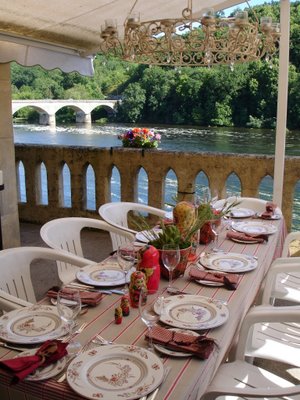
Click on Link:
Chateau Lalinde : The perfect venue for your event
TAGS: Events Rent a chateau France
Chateau
Perigord Food Holidays in France Recipes
|
|
|
|
|

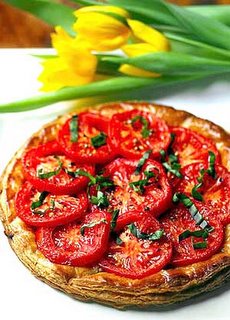
Pastry:
7 oz (200 g) plain, unbleached flour
pinch of salt
3 oz (75 g) butter
1 ½ (40 g) freshly grated parmesan
1 egg yolk
filling:
2 ½ lb (1.25 kg) ripe tomatoes
4 tablespoons extra virgin olive oil
2 medium-sized red onions, thinly sliced
2 cloves of garlic, chopped
¼ - ½ teaspoon dried chilli flakes
heaped tablespoon fresh thyme sprigs
2 tablespoons balsamic or sherry vinegar
salt, freshly ground black pepper and caster sugar
2 tablespoons torn basil leaves
Sift the flour and salt into a bowl. Add the butter and cheese and either rub in or process until the mixture forms breadcrumbs. Bind the pastry with egg yolk and 2-3 tablespoons cold water (or whatever necessary to bind). Press together to form a ball, wrap in foil and chill for 30 minutes. Pre-heat the oven to Gas Mark 5 (190° C, 375° F), then roll out the pastry to line a 10 in. (25 cm) round tin or a 12 x 9 in. (30 x 23 cm) oblong tin. Protect the sides of the pastry with strips of foil, prick the base with a fork then bake blind for 15 – 20 minutes until pale brown, removing foil after about 10 minutes. Allow to cool a little.
Meanwhile, make the filling. Skin the tomatoes by covering with boiling water for 30 seconds. Set around ½ lb (225 g) aside. Halve, deseed and chop the remainder. Heat half the oil in a non-aluminium pan and cook the onions and garlic over a gentle heat until just beginning to brown and soft (allow 15 – 20 minutes). Add the chilli flakes and half the thyme and cook a little longer. Add the chopped tomatoes and vinegar. Cook 15 – 20 minutes, stirring regularly, until the mixture is thick. Season with salt, pepper and pinch or two of sugar to taste. Cool, then spoon into the prepared flan case. Heat the oven to Gas Mark 5 (190° C, 375° F). Slice the remaining tomatoes and arrange them on the tart, layering with the basil. Season well with black pepper and a little salt, then sprinkle over the remaining thyme and olive oil. Bake for 20 – 25 minutes and serve hot or warm with salad. Serves 6 – 8.
Variation:
Make the tomato sauce as above using all the tomatoes. Season very well, then purée. Whisk together 2 eggs and ¼ pint (150 ml) double cream, whisk in the tomato purée and the torn basil. Pour into the flan case and bake at Gas Mark 4 (180° C, 350° F) for 20 – 25 minutes, until the filling is risen and set. Delicious warm.
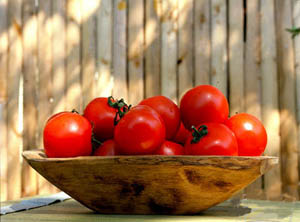
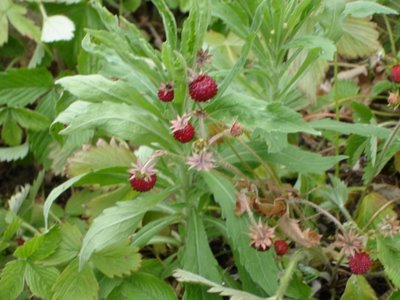
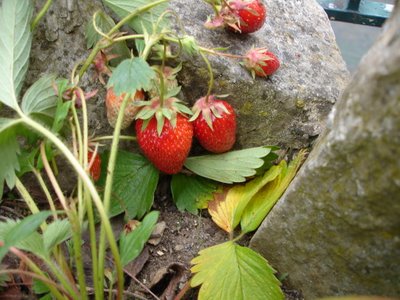
Between the birds and myself, there is a scramble every morning to get to the ripe strawberries first. Sometimes we share (-- meaning they eat half of the ripe berries and I eat what is left) -- but we do not waste a morsel! Never has fruit tasted so sweet!

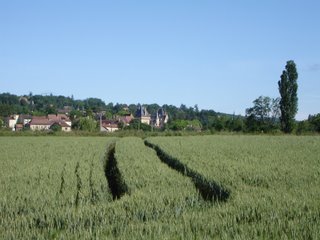 Antony ends his article with these observations: "..........
Antony ends his article with these observations: "..........But this exile, for one, rapidly longed for what had been left behind. The heady richness of London life seemed, as the hours wore on, to be out of kilter with the quiet and steady pace I'd grown accustomed to. It was as if a swarm of flies was buzzing round me all the time. I found myself wanting to get back to the peace of our Périgord home, to Paul and the dogs, to the unpolluted air, to the spacious interiors of the houses, to the luminous landscape, to the shops where people say "Bonjour monsieur" as you enter and "Bonne journée" as you leave.That's why I felt like the Pope when our plane touched down. I didn't kiss the tarmac, of course. But I loved the sight of the late evening sky stretching wide over the Dordogne valley, with its mass of purple storm clouds streaming in from the west. In Bergerac's makeshift airport I pulled my suitcase off the rollers that act as the carrousel, in the tent that acts as the arrivals hall, and went to the field that acts as a carpark.
I drove up towards Ribérac in the gathering darkness, listening to a radio programme about French music in 1937. The wooded hills and little valleys with their clear streams, and the sleepy villages with their dishevelled shutters, crumbling facades and deserted streets, were like so many welcoming hands that greeted the passing car then sped it on its way, upwards and northwards, to the track that led to the open courtyard under the stormy night sky, the dogs jumping up in barking joy, the light spilling through the open doorway. When I turned off the car engine the silence was a sponge that had wiped away all the chaotic scrawl of noise and confusion, leaving a single word gleaming in the darkness. I was home."
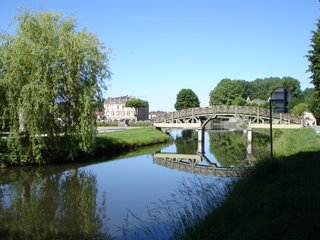 And this morning, when a friend and I went on our early Sunday morning walk, (and I could not stop myself from taking these photographs at every turn!), Antony's words came back to me again, and I wanted to say "YES! And so am I. I, too, am home!"
And this morning, when a friend and I went on our early Sunday morning walk, (and I could not stop myself from taking these photographs at every turn!), Antony's words came back to me again, and I wanted to say "YES! And so am I. I, too, am home!" If you are looking for an activity holiday or simply the most enjoyable and most efficient way to get and keep fit and healthy, there cannot be too many forms of exercise that fit the bill better than Pilates and Fencing - and especially when the instructors are as good -- and as charming as Robyn and Patrick!
If you are looking for an activity holiday or simply the most enjoyable and most efficient way to get and keep fit and healthy, there cannot be too many forms of exercise that fit the bill better than Pilates and Fencing - and especially when the instructors are as good -- and as charming as Robyn and Patrick!It is an Exercise in Balance : "I must be right. Never an aspirin. Never injured a day in my life. The whole country, the whole world, should be doing my exercises. They'd be happier.", said Jo Pilates in 1965, at the age of 86.
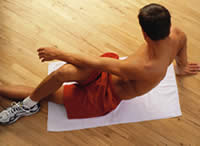
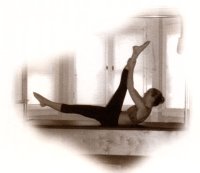 Practiced faithfully, Pilates yields numerous benefits. Increased lung capacity and circulation through deep, healthy breathing is a primary focus. Strength and flexibility, particularly of the abdomen and back muscles, coordination-both muscular and mental, are key components in an effective Pilates program. Posture, balance, and core strength are all heartily increased. Bone density and joint health improve, and many experience positive body awareness for the first time. Pilates teaches balance and control of the body, and that capacity spills over into other areas of one's life.
Practiced faithfully, Pilates yields numerous benefits. Increased lung capacity and circulation through deep, healthy breathing is a primary focus. Strength and flexibility, particularly of the abdomen and back muscles, coordination-both muscular and mental, are key components in an effective Pilates program. Posture, balance, and core strength are all heartily increased. Bone density and joint health improve, and many experience positive body awareness for the first time. Pilates teaches balance and control of the body, and that capacity spills over into other areas of one's life.
And now Pilates has come to the Dordogne as well! Robyn Haigh, from Lalinde, has recently started Pilates classes in Lalinde as well as in Eymet. She works both with groups and in one-on-one classes.

Fencing is a is a fantastic way to improve balance, co-ordination and flexibility - and it's great fun as well!
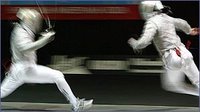 Fencing originated as the practice of swordsmanship to prepare men for duels and warfare. A fencing match is depicted on an Egyptian temple that dates to about 1190 B.C. and the ancient Babylonians, Greeks, Persians, and Romans all had some form of fencing. The use of armour during the Middle Ages made swordsmanship virtually obsolete. The broadsword was used against armour, but only as a crude hacking device requiring sheer strength rather than skill. By making armour obsolete, the development of firearms ironically brought swordplay back into prominence during the 15th century. Soldiers once again had to acquire some skill with the sword, and fencing also emerged as a pastime for gentlemen. Fencing masters organized guilds, which taught various moves to initiates while protecting them as trade secrets from outsiders.
Fencing originated as the practice of swordsmanship to prepare men for duels and warfare. A fencing match is depicted on an Egyptian temple that dates to about 1190 B.C. and the ancient Babylonians, Greeks, Persians, and Romans all had some form of fencing. The use of armour during the Middle Ages made swordsmanship virtually obsolete. The broadsword was used against armour, but only as a crude hacking device requiring sheer strength rather than skill. By making armour obsolete, the development of firearms ironically brought swordplay back into prominence during the 15th century. Soldiers once again had to acquire some skill with the sword, and fencing also emerged as a pastime for gentlemen. Fencing masters organized guilds, which taught various moves to initiates while protecting them as trade secrets from outsiders.


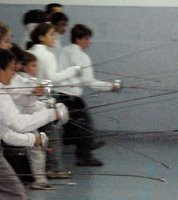
 Fencing is one of only four sports that have been on every modern Olympic program since 1896. The Fédération Internationale d'Escrime, founded in 1913 to standardize rules, is the governing body for international fencing, including the Olympics.
Fencing is one of only four sports that have been on every modern Olympic program since 1896. The Fédération Internationale d'Escrime, founded in 1913 to standardize rules, is the governing body for international fencing, including the Olympics.Patrick is a sabreur(sabre fencer), and recently received a bronze medal for the team Epée event at the Championnats de France at Alès in the Cevennes.
This past Sunday (28 May 2006) he also became Champion d'Aquitaine (Vétéran V1 Individuelle) at Mont de Marsan at the Championnats de Ligue Vétéran, again at Epée --- and after beating the Maitre d'armes of Périgueux in the quarter finals, and his club president in the semi!
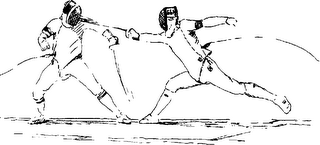
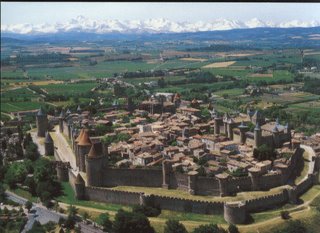 I have just had a call from David from Cheval-Voyages and he says he is on his way to the Cathares Chateaux with a group ---- if you have read Da Vinci Code or seen the film (OK! You don't have to admit publicly that you enjoyed it!) or Kate Mosse's best seller Labyrinth, then you would want to do this ride -- to all those wickedly romantic and historic places, like Carcassonne.
I have just had a call from David from Cheval-Voyages and he says he is on his way to the Cathares Chateaux with a group ---- if you have read Da Vinci Code or seen the film (OK! You don't have to admit publicly that you enjoyed it!) or Kate Mosse's best seller Labyrinth, then you would want to do this ride -- to all those wickedly romantic and historic places, like Carcassonne.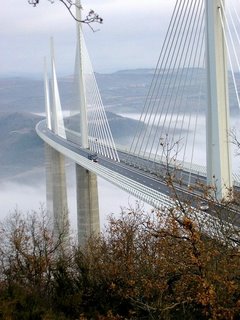 And on 3 June David is off to Millau -- I am leaving the same day on a motorbike for Spain and will be travelling over the Milau viaduct as well! On horseback or on the back of a motorbike -- this Foster and Partners design is the most amazing engineering feat, and I cannot wait to see it!
And on 3 June David is off to Millau -- I am leaving the same day on a motorbike for Spain and will be travelling over the Milau viaduct as well! On horseback or on the back of a motorbike -- this Foster and Partners design is the most amazing engineering feat, and I cannot wait to see it! 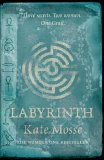
Kate Mosse: Labyrinth : Review from Publishers Weekly
Mosse's page-turner takes readers on another quest for the Holy Grail, this time with two closely linked female protagonists born 800 years apart. In 2005, Alice Tanner stumbles into a hidden cave while on an archeological dig in southwest France. Her discovery—two skeletons and a labyrinth pattern engraved on the wall and on a ring—triggers visions of the past and propels her into a dangerous race against those who want the mystery of the cave for themselves. Alaïs, in the year 1209, is a plucky 17-year-old living in the French city of Carcassone, an outpost of the tolerant Cathar Christian sect that has been declared heretical by the Catholic Church. As Carcassonne comes under siege by the Crusaders, Alaïs's father, Bertrand Pelletier,entrusts her with a book that is part of a sacred trilogy connected to the Holy Grail. Guardians of the trilogy are operating against evil forces—including Alaïs's sister, Oriane, a traitorous, sexed-up villainess who wants the books for her own purposes. Sitting securely in the historical religious quest genre, Mosse's fluently written third novel (after Crucifix Lane) may tantalize (if not satisfy) the legions of Da VinciCode devotees with its promise of revelation about Christianity's truths.
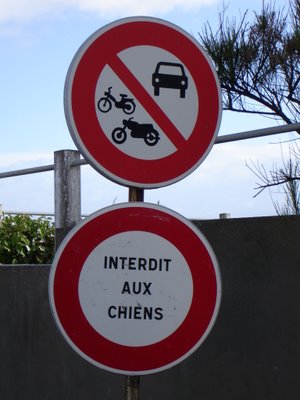
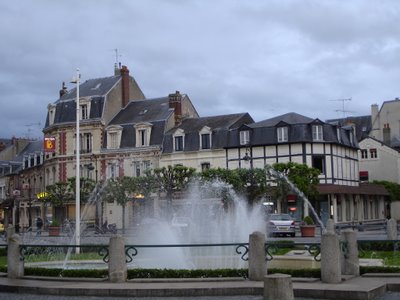
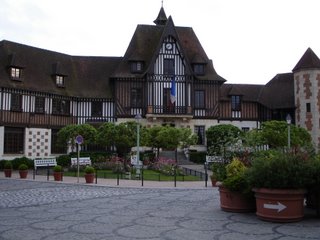 One of the most impressive buildings is the Normandy Barrière Hotel. Built in 1912 on the instigation of Eugène Cornuché, a businessman and the creator of Maxim's in Paris, Désiré Le Hoc, the Mayor of Deauville, and the architect Théo Petit, the Normandy Hotel, with the casino, replaced and updated the Second Empire style of construction. The new luxury hotel was immediately successful thanks to its level of comfort, facilities, furnishings and novel interior decoration. The exterior façades are finished with imitation wood panelling in celadon, the pale green used in Chinese porcelain.
One of the most impressive buildings is the Normandy Barrière Hotel. Built in 1912 on the instigation of Eugène Cornuché, a businessman and the creator of Maxim's in Paris, Désiré Le Hoc, the Mayor of Deauville, and the architect Théo Petit, the Normandy Hotel, with the casino, replaced and updated the Second Empire style of construction. The new luxury hotel was immediately successful thanks to its level of comfort, facilities, furnishings and novel interior decoration. The exterior façades are finished with imitation wood panelling in celadon, the pale green used in Chinese porcelain.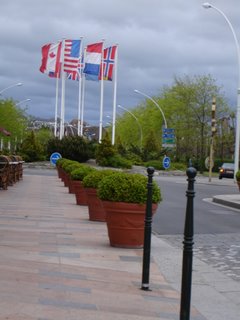 The Casino first opened its doors in 1864, but was demolished thirty years later in 1895. It was replaced in 1912 by an edifice designed by the architect Georges Wybo, which took its inspiration from buildings dating from the 18th Century, evocative of festivals and the simple pleasures of rustic frivolity, like the Petit Trianon, the opera house of the Château de Versailles, and the small theatres on the Champs Elysées built during the Restoration period. Its neo-Louis XVI architecture has been modified over time to suit the tastes and fashions of its aficionados; the façade has been moved forward by 6 metres, enabling a large gallery to be created, and it is now open on the seaward side. It is ranked among the major casinos in Europe and is the third largest in France.
The Casino first opened its doors in 1864, but was demolished thirty years later in 1895. It was replaced in 1912 by an edifice designed by the architect Georges Wybo, which took its inspiration from buildings dating from the 18th Century, evocative of festivals and the simple pleasures of rustic frivolity, like the Petit Trianon, the opera house of the Château de Versailles, and the small theatres on the Champs Elysées built during the Restoration period. Its neo-Louis XVI architecture has been modified over time to suit the tastes and fashions of its aficionados; the façade has been moved forward by 6 metres, enabling a large gallery to be created, and it is now open on the seaward side. It is ranked among the major casinos in Europe and is the third largest in France.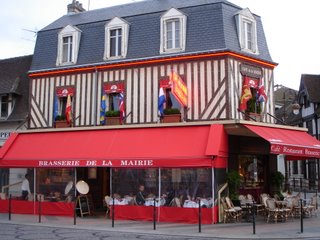
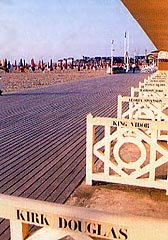 My favourite place though will always be Les Planches -- or the boardwalk. This famous promenade along the beach, made in 1923 of ekki or eba, a species of hardwood from Madagascar that is reputed to be totally resistant to decay and rot, is 643 metres long. It is lined on one side by small cabins sporting the names of the American stars who have come to Deauville during the American Film Festival, and on the other by the celebrated coloured parasols, whose dominant blue and red are the colours of Deauville.
My favourite place though will always be Les Planches -- or the boardwalk. This famous promenade along the beach, made in 1923 of ekki or eba, a species of hardwood from Madagascar that is reputed to be totally resistant to decay and rot, is 643 metres long. It is lined on one side by small cabins sporting the names of the American stars who have come to Deauville during the American Film Festival, and on the other by the celebrated coloured parasols, whose dominant blue and red are the colours of Deauville.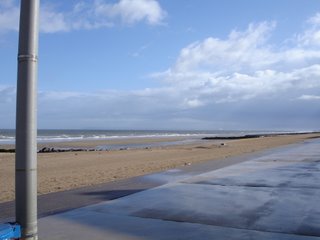 There is much else to see and do besides. To name but a few more: Le Circle, where the race-horse owners from major stables have been meeting since 1875, the Elie de Brignac Establishment, one of the world's leading thoroughbred horse markets, or the Villa Strassburger, which is on the site of a farm belonging to Gustave Flaubert's family: Henri de Rothschild had a villa built by an architect from Caen, Pichereau, which came to be called the Ferme du Coteau (the hillside farm). Following the Great War, the villa was bought by the wealthy American Beaver Strassburger, it became his favourite residence. His son donated it to the Town of Deauville in 1980. Its design is a combination of both the rural architectural style and that of Pays d'Auge manor house. The luxury of its fittings and furnishings and its picturesque style make it one of Deauville's most beautiful villas. It has been listed on the additional Historic Monuments register since 1975.
There is much else to see and do besides. To name but a few more: Le Circle, where the race-horse owners from major stables have been meeting since 1875, the Elie de Brignac Establishment, one of the world's leading thoroughbred horse markets, or the Villa Strassburger, which is on the site of a farm belonging to Gustave Flaubert's family: Henri de Rothschild had a villa built by an architect from Caen, Pichereau, which came to be called the Ferme du Coteau (the hillside farm). Following the Great War, the villa was bought by the wealthy American Beaver Strassburger, it became his favourite residence. His son donated it to the Town of Deauville in 1980. Its design is a combination of both the rural architectural style and that of Pays d'Auge manor house. The luxury of its fittings and furnishings and its picturesque style make it one of Deauville's most beautiful villas. It has been listed on the additional Historic Monuments register since 1975. 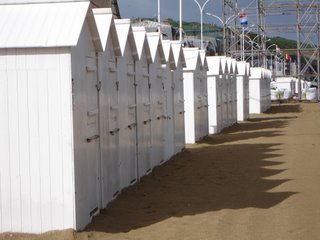
"The two great Cowes that in loud thunder roar, This on the eastern, that the western shore".
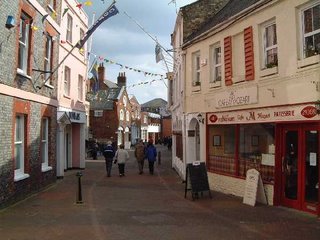
Cowes, on the other hand, did not tempt me away from my books and my studies, and the one ray of bright sunshine during an otherwise grey and wet and cold sojourn, was our VHF radio instructor, Angus!
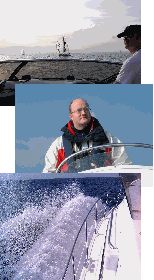 Cowes is a seaport town on the Isle of Wight, an island due south of the major southern English port of Southampton. It is located on the west bank of the estuary of the River Medina and the only thing that can really be said in its favour, is that it hosts the world's oldest regular regatta, Cowes Week, which occurs in the first week of August, and is home to the world famous Royal Yacht Squadron, which ranks amongst the world's elite yacht clubs.
Cowes is a seaport town on the Isle of Wight, an island due south of the major southern English port of Southampton. It is located on the west bank of the estuary of the River Medina and the only thing that can really be said in its favour, is that it hosts the world's oldest regular regatta, Cowes Week, which occurs in the first week of August, and is home to the world famous Royal Yacht Squadron, which ranks amongst the world's elite yacht clubs. 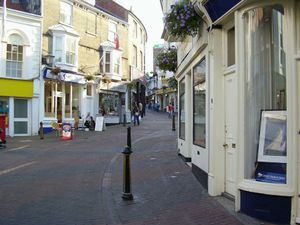
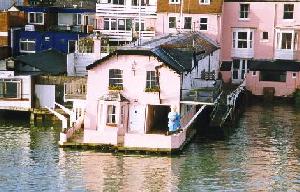
Local industry in both Cowes and East Cowes has always centred on the building and design of marine craft, including the early flying boats, and sailmaking. It is also noted as the place where the first hovercraft was tested. East Cowes was also once home to the manufacturer Saunders Roe, who built the flying boat The Saunders-Roe Princess.
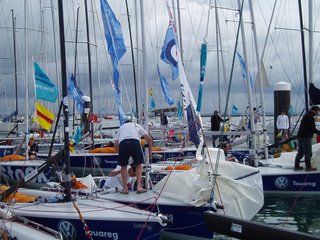
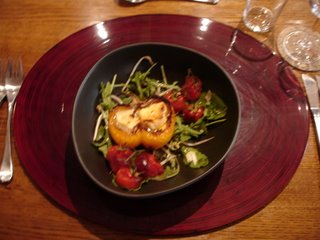
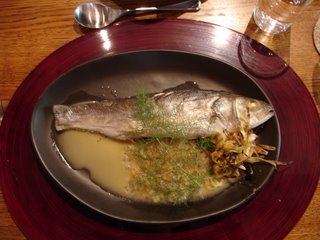
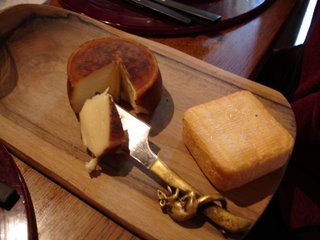
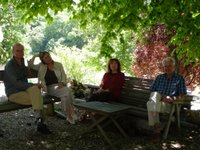
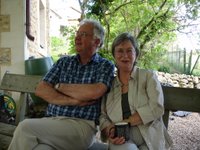

Through a chance encounter -- actually, as a result of me making friends with two delightful little boys, David and Gabriel, and inviting them up from the river's edge onto the chateau terrace to come look at my fishing rods and trout flies!, their mother, Francoise Alleysson and I are now looking for a place and an opportunity for her to come back to Lalinde to share with our community some of her many wonderful talents.

“A great musical success served by an exceptional duet: Françoise Alleysson, soprano, and Pierre Perdigon, organ and harpsichord.” -- Dauphiné Libéré, April 2005
“Very high quality voices, evenly registered and beautifully mixed, for Savage by Dominique Lehmann.“ -- Vevey Hebdo (Switzerland), Frédéric Vallotton
“On the stage of the Vevey theatre, under the spell of the Opera Studio”
“In The Medium, Françoise Alleysson, soprano, bewitches us through her sincerity and sings in the first act the Berceuse with her bright voice”
“In The Telephone, Françoise Alleysson, voluble, extraverted, irresistible, stands out unquestionably”-- Presse Riviera Chablais (Switzerland),
“Françoise Alleysson has a superb coloratura soprano voice.
The tone is clear and generous, the high notes come easily, and her highly musical rendering brings captivating nuances to the all the texts.” -- Dauphiné Libéré
I shall most certainly be working towards organsing an event to have this delightful family -- and talented artists -- return to the Dordogne and the Chateau Lalinde to perform for us!
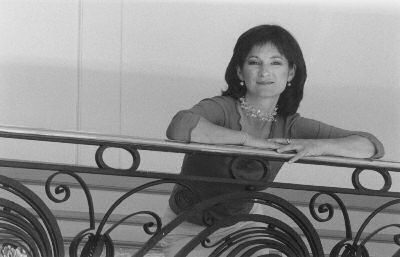
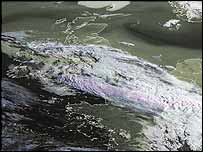
Last week, a friend of mine suffered the worst asthma attack she has had in years. Everyone is complaining about allergies -- people who have never had a problem, are rubbing eyes, complaining of unbearable itches, nursing sore throats, grabbing for the kleenex at every turn. And cars, furniture indoors and out, window panes --- every surface everywhere is covered in the finest of fine layers of yellow powder. Even the pool looks as if there is a thin layer of pale yellow oil covering the entire surface.
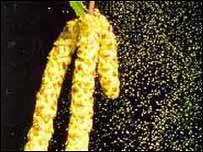
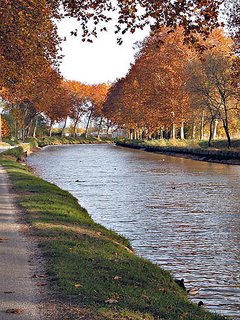
"Personally I have no hesitation in saying we can cut them down and plant elsewhere" says Jean Glavany, Agriculture Minister. I have no hesitation in saying let us cut M. Galvany down and deport him elsewhere -- such as to the Sahara dessert.............

(I was stopped on Saturday night at 40 minutes past midnight, just outside Lalinde -- the second time in so many months! -- and breathalysed. The monitor showed 00.000 -- the police loved it -- so did I! Does not happen too often!)
